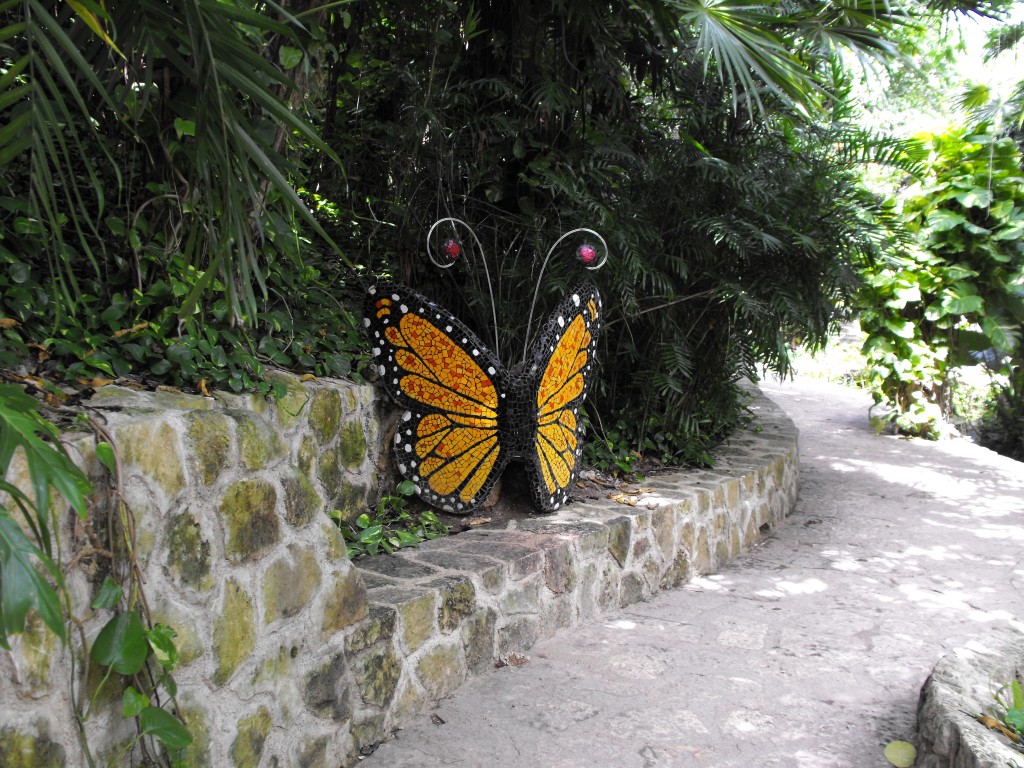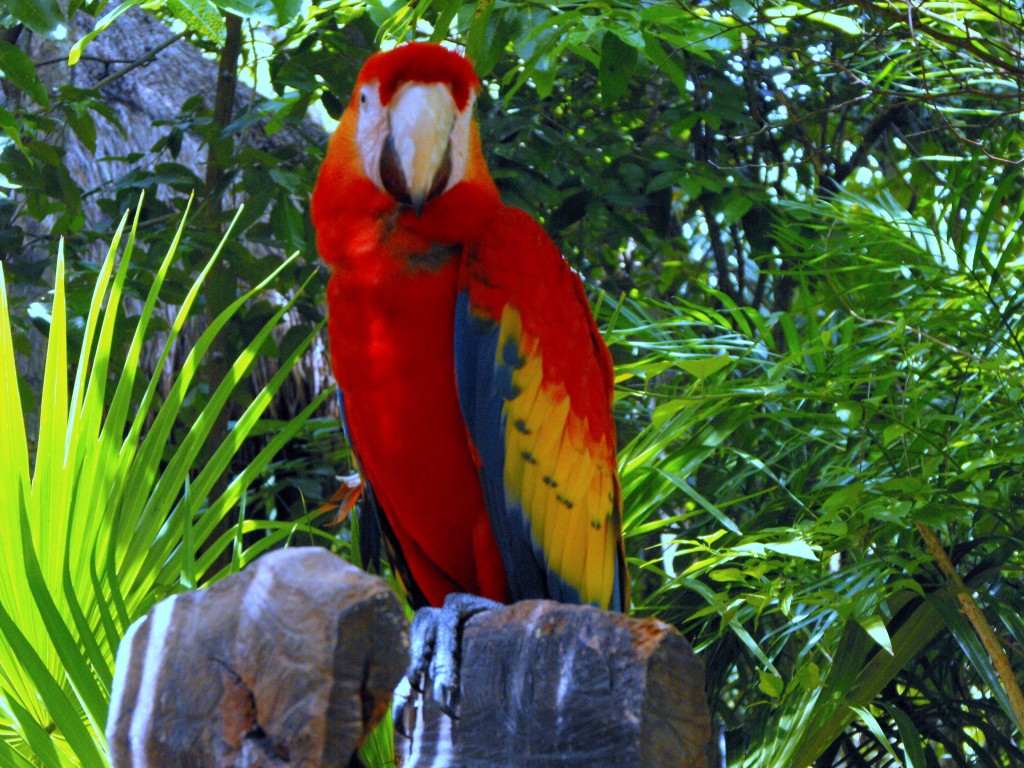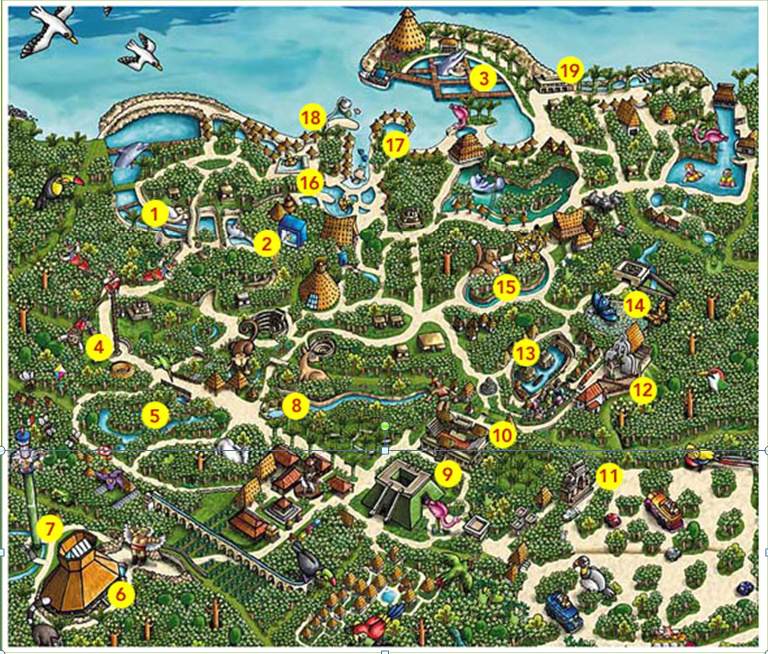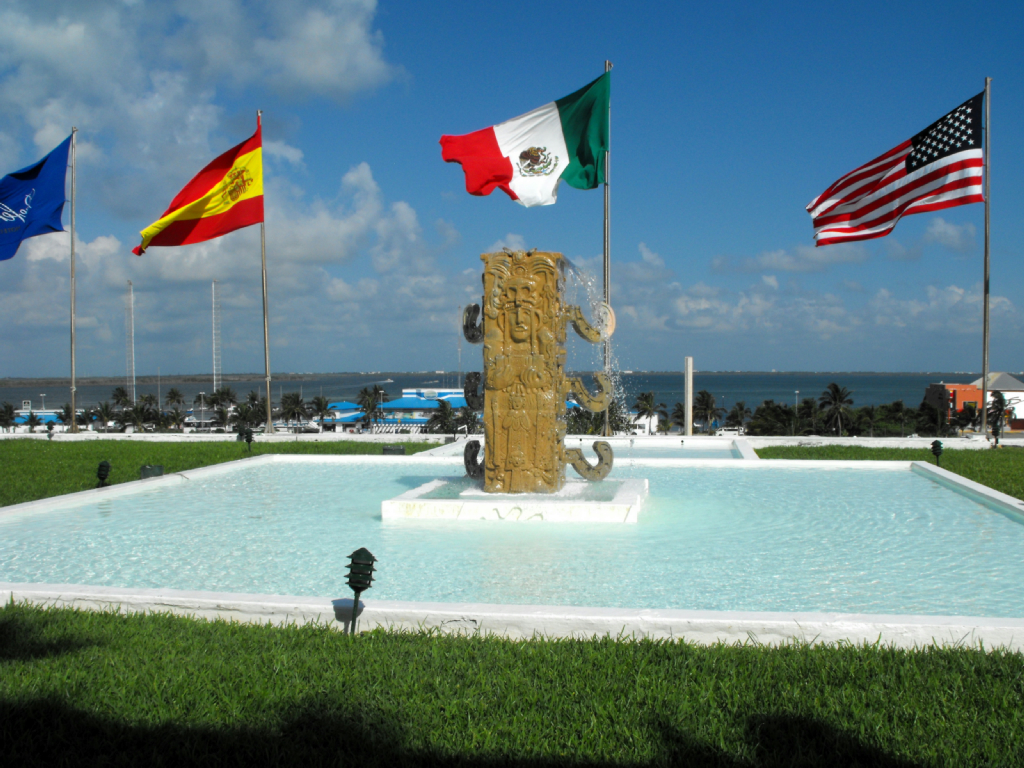Butterfly Pavilion at Xcaret is the most impressive butterfly habitat I’ve ever seen. According to Xcaret’s web site, this is the first butterfly breeding facility in Mexico. The structure is 49 feet high and has nearly 38,000 sq. ft. of free flying space, the largest butterfly facility in the world. It features only regional species native of the Yucatan peninsula in their natural habitats and its caretakers work diligently with some 5,000 butterflies in an intensive breeding program for 20 endemic species. I guess this butterfly sign warns us, the visitors, that we are getting closer to the Butterfly Pavilion.
Archive for » October, 2012 «
Aviary is my favorite place at Xcaret. Aviary is a natural habitat for some 60 species of tropical birds who populate the jungles of the Yucatan peninsula. Here the visitors can see some of the most spectacularly colored birds of the jungle living within an open-air sanctuary. Parrots and macaws mate for life and at Xcaret they have plenty of company. The birds are not just there to amuse visitors, there is an active breeding program and birds are reintroduced into the wild. This scarlet macaw is one of dozens in the park.
Xcaret is a theme park in Riviera Maya, Mexico which offers a large variety of activities. Dave and I had Xcaret plus admission tickets to the park which included transport to and from Xcaret, park entrance, a buffet meal, access to all except extras, the park’s attractions and activities and Xcaret Night Show. It also included complimentary use of showers, beach loungers, hammocks, life vests, use of snorkeling equipment and a locker. It is an impressive and beautiful park known for its water and land attractions. We decided to skip the water activities and to see the park’s grounds instead. Here is a map of the park from xcaret-tickets.com.
I had to upload this post, because tomorrow “the End of the World” is expected. 🙂 I just heard over the radio, that the marketing strategy really works and the tourists flooded the Yucatan Peninsula. We visited the Mayan ruins this summer and the mystery of the Mayan Apocalypse has been explained to us. Let’s follow our journey to the ancient Mayan world.
It was a beautiful sunny morning in Cancun, Mexico. Dave and I were enjoying our coffee outside of the hotel’s entrance, while waiting for our transportation to arrive. On this day we were going to visit the ancient Mayan city of Chichen Itza. Chichen Itza is considered the largest of the ruined Mayan cities on the Yucatan Peninsula and one of Mexico’s most-visited tourist destinations. Construction of the city began in the 7th century and the city reached its peak in the 10th century. Nichupte Lagoon is seen right behind the fountain from the entrance of our hotel.



